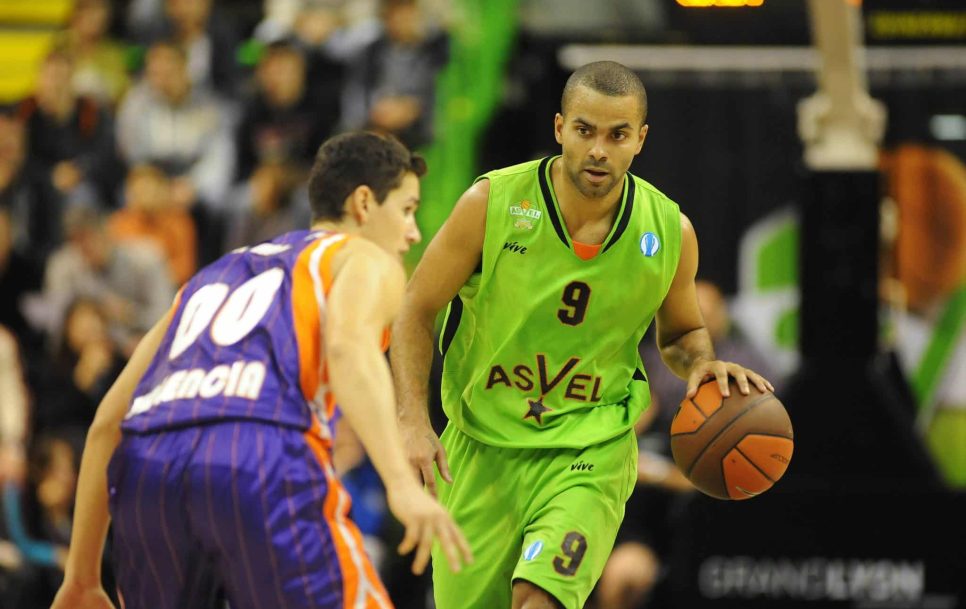NBA on pause: when close to 100 players went on a world tour
In 2011, the NBA held no practices or games for five months and one week. A dispute over the collective bargaining agreement, essentially a dispute over money, put the league on pause, forcing many players to seek opportunities elsewhere.
The lockout, which lasted from July 1 to December 8, 2011, was the fourth in the NBA’s history but the first that led to a significant movement of players to other teams.
Still, many players, primarily Americans, stayed home waiting for the dispute to end and played in various pro-am leagues. For example, James Harden played in the Drew League, and Kevin Durant in the Goodman League.
Some used the lockout as an opportunity to represent their country. Puerto Ricans Renaldo Balkman, Jose Juan Barea, and Carlos Arroyo helped their national team win the Pan American Games.
A few months earlier, the European Championship was held in Lithuania, where Spain won for the second time. One of their leaders, Pau Gasol, used the lockout to heal his ankle and trained with his former club, Barcelona.
Some players didn’t need to mend themselves and thought about money; the best option was to go to China. However, this was a risky choice, as the league didn’t allow players to return to the NBA unless they were Chinese nationals. As a result, players like Aaron Brooks, Kenyon Martin, J.R. Smith, and others had to stay put for the season, while Yi Jianlian was allowed to return to the NBA in December.
European leagues were more lenient compared to the Chinese. The Old World welcomed NBA players with open arms if they had valid contracts to take them back across the pond once the lockout ended.
Thus, it’s no surprise that European clubs became far more attractive to players, and not only Europeans but Americans also left the NBA for a few months.
A star at the peak of his powers
During the lockout, 74 players signed contracts with European clubs. Among them were both unremarkable NBA players—such as Darnell Jackson, who averaged 2.2 points per game, and Gani Lawal, who played one minute and 56 seconds in the league—and stars or important rotation pieces, most of whom were from the Old World.
But not all.
The most notable player who sought refuge in Europe was Deron Williams. The guard, who had been selected for the NBA All-Star game in the previous two seasons, was also part of the USA team that won gold at the 2008 Beijing Olympics and was at the peak of his powers.
Williams joined Turkish team Besiktas in mid-July and was set to earn five million dollars for one season. Although the American only played 15 games for the club, they retired his jersey with the number eight.
A week before his last game in Europe, Williams showed how formidable an NBA star can be here. In a FIBA EuroChallenge game against Göttingen, he scored 50 points, a rare achievement in the Old World.
DeJuan Blair had only played two seasons in the NBA but had adapted well to the San Antonio Spurs and their coach Gregg Popovich’s system, proving himself to be a talented big man. Just over two meters tall but weighing more than 120 kg, the bull of a man had averaged about eight points and 6.7 rebounds per game for the Spurs over two seasons before signing with Russian team Samara Krasnye Krylia in September.
Among the Americans, there are also examples of players who didn’t return to the NBA after the lockout ended. Perhaps the most famous is Acie Law, who joined Partizan Belgrade but was bought out by Olympiacos in early 2012. Law won two consecutive EuroLeague titles with the Greek powerhouse.
Or those who, in the fall/winter of 2011, you wouldn’t have expected to become NBA stars. Danny Green was never a massive scorer, but he has three championship rings, and when people started talking about 3&D players in basketball, he was often the first name mentioned. During the lockout, he played for Olimpija Ljubljana in Slovenia, where a certain Luka Doncic was growing up in the youth academy.
Parker lost a lot of money
Thanks to the lockout, some European clubs became extremely strong. Real Madrid brought back Rudy Fernandez and Serge Ibaka to Spain. ASVEL Villeurbanne signed center Ronny Turiaf and the legendary point guard Tony Parker, who had already become a three-time NBA champion. The Frenchman, already a part-owner of the club then, played for the team virtually for free but paid $250,000 for health insurance for three months.
Perhaps the best signing was made by CSKA Moscow, who brought in Andrei Kirilenko. The Russian had risen to become one of the NBA’s most versatile players, and he decided to stay in Europe until the end of the season.
Kirilenko averaged 14.1 points and 7.5 rebounds per game in the EuroLeague and was deservedly named MVP, selected for the All-EuroLeague First Team, and voted as the best defensive player in the strongest club competition in the Old World.
It’s interesting to note that Italian clubs were the most active in recruiting NBA players. Among the 13 players were many lesser-known names, but also Danilo Gallinari, who returned to Milano Olimpia, cult legend Brian Scalabrine, and Tyreke Evans, who had averaged 17.8 points per game for the Sacramento Kings in the previous season.







